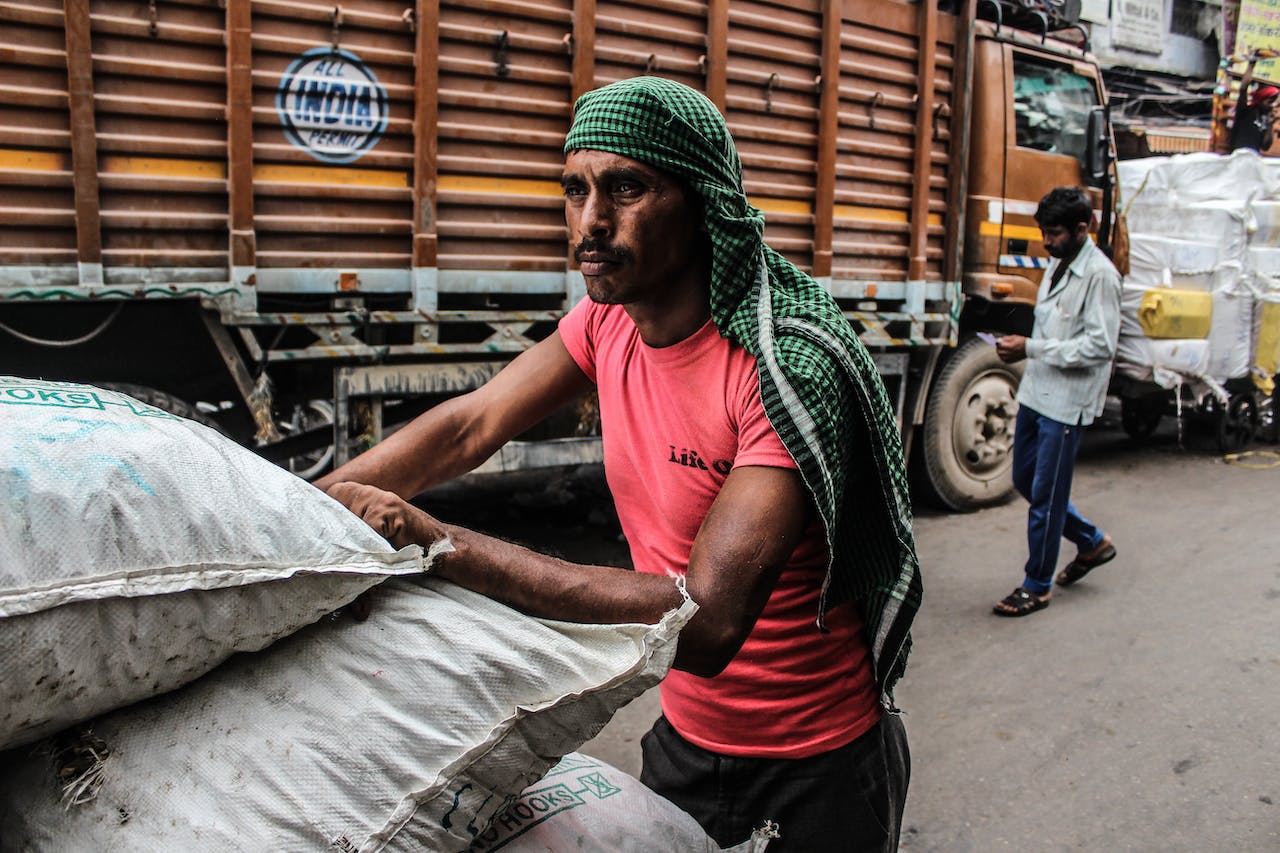Everywhere across India, things change quietly, like the gentle rise and fall of the ocean. This tide is not of water, but of people – millions of young men, leaving their familiar villages and towns in search of new opportunities in distant cities. This phenomenon, known as male worker migration, is a defining feature of modern India, shaping the lives of individuals, families, and communities alike.
Understanding male worker migration is crucial not only for its economic implications, but also for its social and human consequences. It is a story woven with threads of hope, hardship, resilience, and transformation. This article aims to delve into this complex phenomenon, exploring its scope, causes, and potential solutions.
Table of contents [Show]
- Male Worker Migration in India: A Deeper Dive with Stats and Data
- Understanding the magnitude through numbers:
- Beyond just numbers: Sectoral distribution and the informal landscape
- Data limitations and the hidden picture
- Unveiling the Diverging Patterns of Male Worker Migration in India
- High Out-Migration States: Pushing Factors and Challenges
- Major Receiving States: Pulling Factors and Shifting Trends:
- Beyond the Big Four: Exploring Emerging Destinations
- Southward Shift: A Quest for Greener Pastures?
- Unveiling the Roots: Exploring the Causes of Male Worker Migration in India
- Push Factors: The Impelling Forces from Home
- Pull Factors: The Luring Lights of the City
- The Interplay of Push and Pull:
- Solutions and the Way Forward for Male Worker Migration in India
- Empowering Rural Communities:
- Enhancing Urban Opportunities:
- Bridging the Gap: Policy and Societal Interventions
- Looking Ahead:
Male Worker Migration in India: A Deeper Dive with Stats and Data
The vast phenomenon of male worker migration in India, highlights its scale and geographical patterns. Now, let's dig deeper with data and statistics to paint a clearer picture of this complex issue.
Understanding the magnitude through numbers:
| 45 million: | The estimated number of internal migrants in India as per the 2011 Census, representing nearly 7% of the total population. |
| 27 million: | The number of individuals who migrated across states for work or education in 2011, showcasing the interstate movement. |
| 34 million: | The number of individuals who migrated from rural to urban areas, driven by the promise of better opportunities in cities. |
| 20-34 years: | The predominant age group of male migrants, indicating the movement of young people seeking better prospects. |
| Bihar, Uttar Pradesh, Odisha, Rajasthan: | States with high out-migration due to limited job opportunities within their borders. |
| Maharashtra, Gujarat, Delhi, Tamil Nadu: | Major receiving states with booming industrial and service sectors attracting a large migrant workforce. |
Beyond just numbers: Sectoral distribution and the informal landscape
| Construction: | A significant employer of male migrants, offering daily wage jobs but often characterized by poor working conditions and lack of social security. |
| Manufacturing: | Another major sector attracting migrants, particularly in industrial hubs like Gujarat and Maharashtra, but often involving low-skilled, repetitive work. |
| Service sector: | Witnessing a growing share of migrants, encompassing diverse roles in transportation, hospitality, retail, and other segments. |
| Informal economy: | A large portion of male migrants find work in the informal sector, characterized by unregulated work conditions, low wages, and limited job security. |
Data limitations and the hidden picture
While these statistics provide valuable insights, it's crucial to acknowledge limitations. The 2011 Census data might not capture the latest migration trends, and informal sector employment remains undercounted. Additionally, migration often involves undocumented movement, making it challenging to capture the complete picture.
Unveiling the Diverging Patterns of Male Worker Migration in India
While the phenomenon of male worker migration cuts across India's vast landscape, the regional nuances paint a diverse and dynamic picture. Understanding these variations is crucial for formulating targeted policies and interventions that address the specific challenges faced by migrants in different parts of the country.
High Out-Migration States: Pushing Factors and Challenges
| Bihar, Uttar Pradesh, Odisha, Rajasthan: | These states grapple with limited job opportunities, primarily in agriculture, leading to large-scale out-migration. |
| Data: | Over 10 million individuals from Bihar and Uttar Pradesh migrated inter-state for work in 2011. |
| Challenges: | Migrants from these regions often face skill gaps, limited education, and social barriers, making them vulnerable to exploitation and trafficking. |
Major Receiving States: Pulling Factors and Shifting Trends:
| Maharashtra, Gujarat, Delhi, Tamil Nadu: | These states act as magnets due to their booming industrial and service sectors, offering diverse employment opportunities. |
| Data: | Maharashtra alone received over 10 million interstate migrants in 2011, primarily for work. |
| Shifting Trends: | Southern states like Tamil Nadu are witnessing increasing in-migration, particularly in sectors like manufacturing and construction. |
Beyond the Big Four: Exploring Emerging Destinations
| Kerala, Telangana, Andhra Pradesh: | These states are emerging as preferred destinations due to their growing economies and infrastructure development. |
| Data: | Kerala saw a significant increase in interstate in-migration between 2001 and 2011, driven by its healthcare and tourism sectors. |
| Challenges: | These states need to address potential infrastructure and social service strains associated with rapid in-migration. |
Southward Shift: A Quest for Greener Pastures?
| Recent years: | A growing trend of southward migration is observed, with states like Kerala and Tamil Nadu attracting migrants from traditional out-migration states. |
| Possible reasons: | Better living conditions, higher wages, and perceived safety in southern states compared to some northern counterparts. |
| Impact: | This trend necessitates an understanding of the specific needs and challenges faced by migrants from different regions within the receiving states. |
Remember, these are just broad strokes on a complex canvas. Each state has its unique socio-economic context, impacting migration patterns and the experiences of migrants. By understanding these regional variations, policymakers and stakeholders can develop more nuanced and effective interventions to address the challenges and opportunities associated with male worker migration in India.
Unveiling the Roots: Exploring the Causes of Male Worker Migration in India
Male worker migration in India is not a random phenomenon but a complex chain reaction triggered by various push and pull factors. Understanding these underlying causes is crucial for formulating effective solutions that address the root of the issue, not just its symptoms.
Push Factors: The Impelling Forces from Home
| Limited livelihood opportunities: | Rural areas often lack sufficient employment opportunities, particularly in agriculture due to factors like land fragmentation and inadequate irrigation. |
| Underdeveloped infrastructure and social services: | Lack of access to quality education, healthcare, and essential amenities in rural areas pushes individuals to seek better prospects elsewhere. |
| Natural disasters and environmental degradation: | Droughts, floods, and other natural disasters can displace populations and disrupt livelihoods, leading to migration in search of stability and security. |
| Social factors and aspirations: | Societal pressure for upward mobility, aspirations for a better life, and desire to escape social hierarchies can also motivate individuals to migrate. |
Pull Factors: The Luring Lights of the City
| Job opportunities: | Cities offer a wider range of employment opportunities in various sectors, attracting individuals seeking better wages and career advancement. |
| Higher wages and better living standards: | The perceived promise of higher incomes and improved living conditions in cities acts as a magnet for migrants. |
| Social networks and support systems: | Existing networks of friends and family members who have already migrated can provide crucial support and information, facilitating the migration process for newcomers. |
The Interplay of Push and Pull:
It's important to understand that these push and pull factors are rarely isolated. They often interact and reinforce each other, creating a complex web that compels individuals to migrate. For example, limited job opportunities in rural areas (push factor) combined with the promise of higher wages in cities (pull factor) can create a powerful incentive for migration.
Remember, migration is not always a forced choice. Individuals make calculated decisions based on their circumstances and aspirations, seeking a better future for themselves and their families.
Solutions and the Way Forward for Male Worker Migration in India
Addressing this complex phenomenon requires a multi-dimensional approach that tackles both the root causes and the challenges faced by migrants.
Empowering Rural Communities:
| Investing in rural infrastructure: | Upgrading irrigation systems, promoting rural electrification, and improving road connectivity can create local employment opportunities and reduce the need for migration. |
| Skill development programs: | Equipping rural youth with relevant skills for in-demand sectors can enhance their employability and reduce their dependence on low-skilled, informal urban jobs. |
| Boosting agricultural productivity: | Implementing modern farming techniques, providing access to credit and markets, and promoting crop diversification can make agriculture a more sustainable and attractive livelihood option in rural areas. |
Enhancing Urban Opportunities:
| Formalizing the informal sector: | Providing social security benefits, minimum wage standards, and improved working conditions for informal sector workers can ensure their dignity and well-being. |
| Developing affordable housing: | Addressing the housing crisis in urban areas can prevent overcrowding and ensure decent living conditions for migrants. |
| Strengthening enforcement of labor laws: | Protecting migrant workers from exploitation and ensuring fair treatment by employers is crucial for their safety and security. |
Bridging the Gap: Policy and Societal Interventions
| Streamlining migration registration processes: | Simplifying registration procedures and providing clear information can facilitate safe and legal migration. |
| Promoting social inclusion and reducing discrimination: | Fostering a welcoming environment in urban areas and combating prejudices against migrants is essential for their integration and well-being. |
| Strengthening support systems for migrants: | Providing access to healthcare, education, and financial services can cater to their specific needs and improve their quality of life. |
Remember, these solutions are not one-size-fits-all. Tailored interventions that address the specific contexts of different regions and communities are crucial. Additionally, collaboration between government agencies, civil society organizations, and the private sector is essential for effective implementation.
Looking Ahead:
Male worker migration is a complex phenomenon with both challenges and opportunities. By understanding the root causes, implementing effective solutions, and fostering a more inclusive environment, we can create a brighter future for both migrants and their communities. Let us continue this dialogue, explore innovative approaches, and work towards a society where migration empowers individuals and contributes to overall development.








